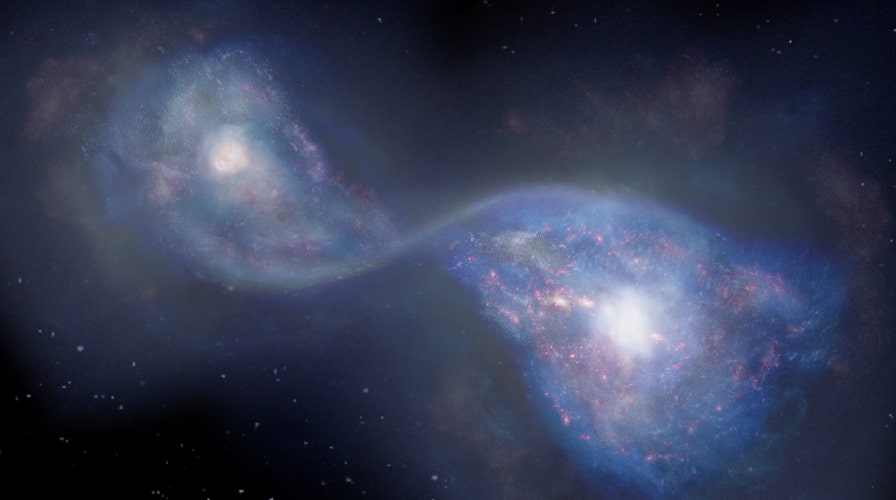Fox News Flash top headlines for June 19
Fox News Flash top headlines for June 19 are here. Check out what's clicking on Foxnews.com
Scientists have located one of the most distant examples of merging galaxies in results that were published this week.
Researchers in Japan observed a distant source of light known as B14-65666, located in the constellation known as Sextans, using the Atacama Large Millimeter/submillimeter Array of telescopes in Chile.
Their data suggested that the object could be a single galaxy forming new stars as the result of a collision in space.
Prior observations with the Hubble Space Telescope had revealed two star clusters in B14-65666.
NASA RAMPS UP SEARCH FOR ALIEN PLANETS

An artist’s impression of merging galaxies known as B14-65666 some 13 billion light-years away. (National Astronomical Observatory of Japan)
EMACIATED POLAR BEAR SPOTTED IN RUSSIAN CITY, FAR FROM HOME
Takuya Hashimoto, a postdoctoral researcher at the Japan Society for the Promotion of Science and Waseda University, Japan, explained that the signals received from the constellation had to travel 13 billion light-years to reach them.
That means researchers can examine what the galaxy looked like 13 billion years ago, or less 1 billion years after the Big Bang.
“Detection of radio waves from three components in such a distant object clearly demonstrates ALMA’s high capability to investigate the distant universe," Hashimoto said in a press release.
Scientists will continue to use this type of research to explore the origins of our universe.
CLICK HERE TO GET THE FOX NEWS APP
“The very early universe seems like a very exciting time to be a galaxy, with lots of violent collision and nothing that looks like the ordered structures we’re used to at later times,” Dan Marrone, associate professor at the University of Arizona, told Gizmodo.

